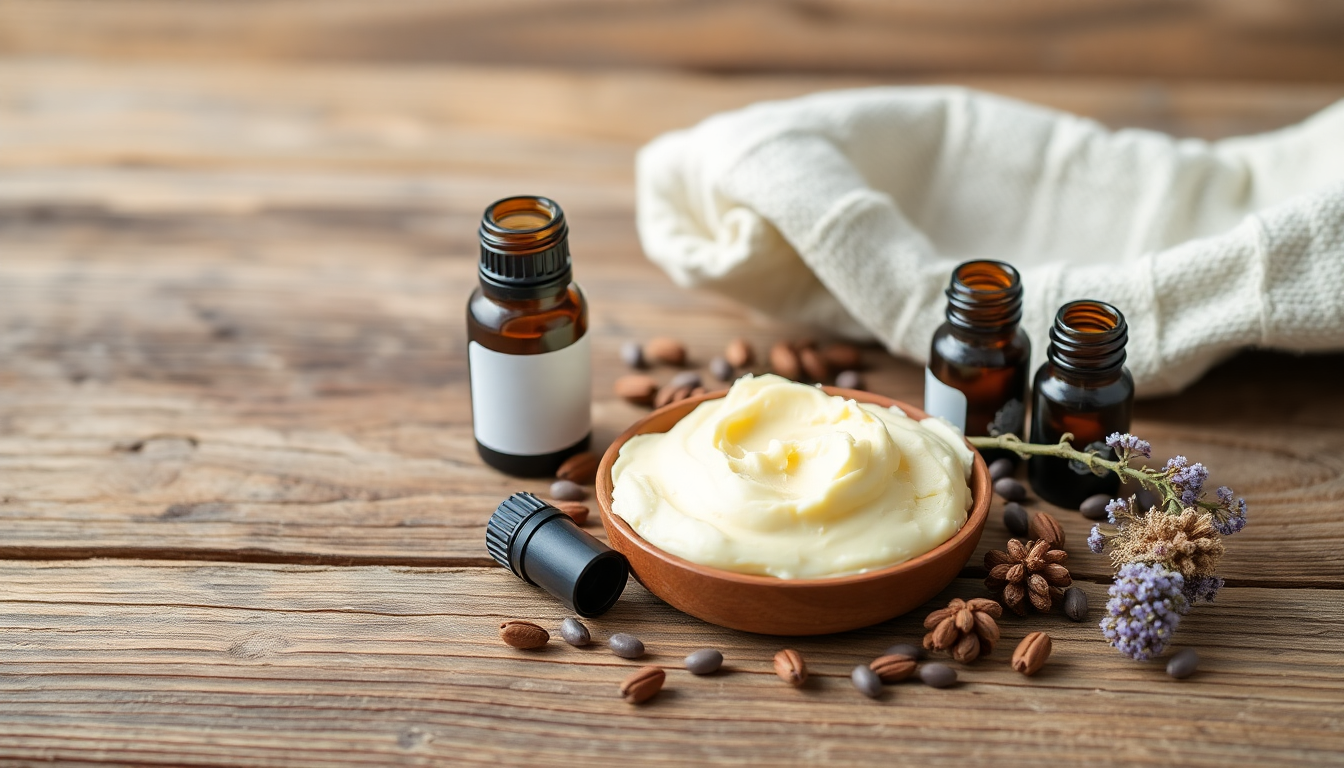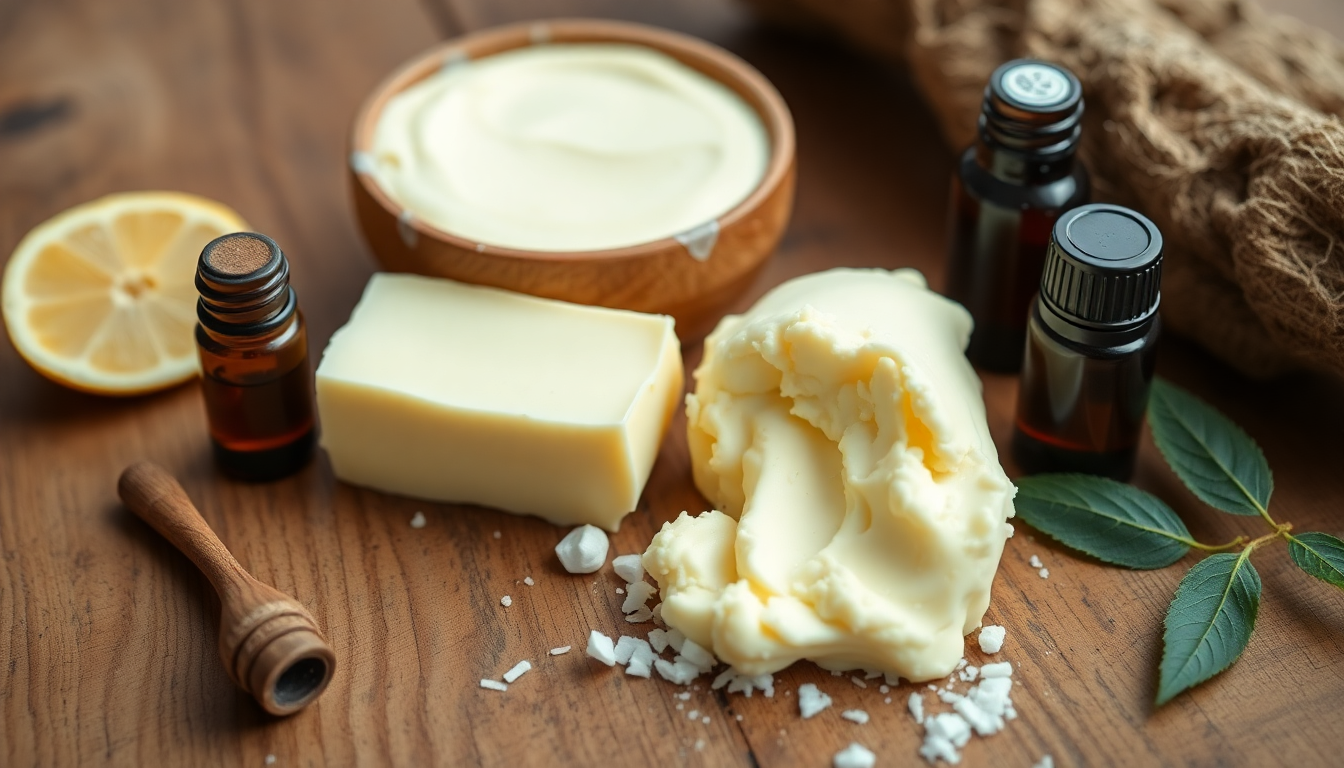Introduction
As we step into 2025, the beauty industry continues to pivot towards natural, eco-friendly products that promote not only external beauty but also well-being. Among the myriad of skincare practices, exfoliation stands out as a vital step to achieving a youthful glow. Utilizing organic shea butter and pure essential oils in your exfoliation routine can elevate your skincare game, providing nourishment and radiance. This comprehensive guide will delve into the significance of exfoliation, the benefits of shea butter and essential oils, and the techniques to implement them effectively for stunning results.
Understanding Exfoliation
Exfoliation is the process of removing dead skin cells from the surface of the skin, which is essential for maintaining a healthy complexion. Our skin naturally sheds dead cells, but as we age or due to environmental factors, this process can slow down, leading to a dull appearance. Regular exfoliation helps to:
- Reveal fresh, new skin cells, promoting a youthful glow.
- Unclog pores, reducing the likelihood of breakouts.
- Improve skin texture, making it smoother and softer.
- Enhance the absorption of skincare products, allowing serums and moisturizers to penetrate effectively.
- Even out skin tone and diminish the appearance of dark spots and hyperpigmentation.
The Magic of Organic Shea Butter
Organic shea butter is a powerhouse ingredient in the world of skincare. Extracted from the nuts of the shea tree, it is packed with nutrients that are beneficial for the skin. Here’s why shea butter is a fantastic choice for exfoliation:
- Rich in Vitamins: Shea butter contains high levels of vitamins A, E, and F, which are essential for nourishing and repairing the skin.
- Deep Hydration: Its natural fatty acids provide intense hydration, making it suitable for all skin types, especially dry or mature skin.
- Anti-Inflammatory Properties: Shea butter is known for its soothing abilities, helping to calm irritated skin and reduce redness.
- Antioxidant Protection: The antioxidants in shea butter help to protect the skin from environmental stressors and premature aging.
- Natural Barrier: It forms a protective barrier on the skin, locking in moisture and preventing dryness.
Harnessing the Power of Pure Essential Oils
Essential oils add an aromatic and therapeutic dimension to your skincare routine. Each oil brings its own unique benefits, making them a perfect complement to shea butter. Here are some popular essential oils and their properties:
- Lavender Oil: Known for its calming scent, lavender oil also has antiseptic properties, making it suitable for sensitive skin.
- Tea Tree Oil: This oil is celebrated for its antimicrobial properties, helping to combat acne and oily skin.
- Frankincense Oil: Renowned for its anti-aging benefits, frankincense promotes skin regeneration and reduces the appearance of scars.
- Sweet Orange Oil: With its uplifting aroma, sweet orange oil brightens the skin and can help improve dullness.
- Rosemary Oil: This oil has antioxidant properties that can help protect the skin from damage and improve circulation.
Essential Exfoliation Techniques
Incorporating organic shea butter and essential oils into your skincare routine can be done through various methods. Here are some effective exfoliation techniques to consider:
1. DIY Shea Butter Scrub
Create a luxurious scrub that not only exfoliates but also hydrates your skin. Here’s a simple recipe:
- 2 tablespoons of organic shea butter
- 1 tablespoon of sugar (brown sugar for sensitive skin) or coffee grounds
- 5-10 drops of your chosen essential oil
Mix the ingredients in a bowl until well combined. Gently massage the scrub onto damp skin in circular motions, focusing on areas that need extra attention, such as elbows, knees, and feet. Rinse with warm water and pat dry.
2. Exfoliating Face Mask
A face mask can provide intensive nourishment while gently exfoliating your skin. Try this recipe:
- 1 tablespoon of organic shea butter
- 1 tablespoon of honey (a natural humectant)
- 5 drops of essential oil (lavender for soothing, tea tree for acne)
Mix all the ingredients and apply the mask evenly across your face. Leave it on for 15-20 minutes, allowing the nourishing properties to penetrate your skin. Rinse off with lukewarm water and enjoy the glow.
3. Bath Soak
Transform your bathing experience into a rejuvenating ritual. Here’s how:
- 1/4 cup of organic shea butter
- 10 drops of your favorite essential oil (eucalyptus for relaxation, sweet orange for brightness)
Combine shea butter and essential oil in a small bowl and add it to warm bath water. Soak for 20-30 minutes, allowing the shea butter to hydrate your skin while the essential oils uplift your spirit.
4. Gentle Exfoliation with a Washcloth
If you prefer a more traditional method, using a washcloth can be effective. Here’s how:
- Apply a small amount of organic shea butter to damp skin.
- Use a soft, damp washcloth to gently scrub your skin in circular motions.
- Rinse thoroughly and follow with your favorite moisturizer.
This method is particularly good for sensitive areas like the face, as it allows for controlled exfoliation without harsh ingredients.
5. Sugar or Salt Scrub for the Body
For body exfoliation, a sugar or salt scrub can work wonders. Here’s a simple recipe:
- 1 cup of sugar or sea salt
- 1/2 cup of organic shea butter
- 10-15 drops of your chosen essential oil
Mix the ingredients in a bowl until you achieve a sandy consistency. In the shower, apply the scrub to wet skin and massage it in, then rinse off. This will leave your skin feeling soft, smooth, and rejuvenated.
Frequency of Exfoliation
While exfoliation is essential, it’s important to find a balance to avoid over-exfoliating, which can lead to irritation and sensitivity. Here’s a guideline for frequency:
- For Normal to Oily Skin: Exfoliate 2-3 times a week.
- For Dry or Sensitive Skin: Exfoliate once a week or every other week.
- For Combination Skin: Tailor your exfoliation frequency to the different areas of your face.
Always listen to your skin; if you notice redness or irritation, reduce the frequency of exfoliation.
Aftercare: Locking in Moisture
After exfoliating, your skin is more receptive to hydration. Here are some aftercare tips to maximize results:
- Apply a gentle toner to balance the pH of your skin.
- Follow with a hydrating serum packed with hyaluronic acid or antioxidants.
- Seal in moisture with a rich moisturizer or facial oil.
- Consider using a soothing mask to calm the skin post-exfoliation.
Conclusion
In 2025, achieving a youthful glow is not just a beauty goal but a reflection of self-care and well-being. By incorporating organic shea butter and pure essential oils into your exfoliation routine, you can revitalize your skin naturally. Remember to choose the right techniques for your skin type, exfoliate regularly, and follow up with nourishing aftercare. Embrace the power of nature, and let your skin radiate health and beauty!




Dejar un comentario
Este sitio está protegido por hCaptcha y se aplican la Política de privacidad de hCaptcha y los Términos del servicio.